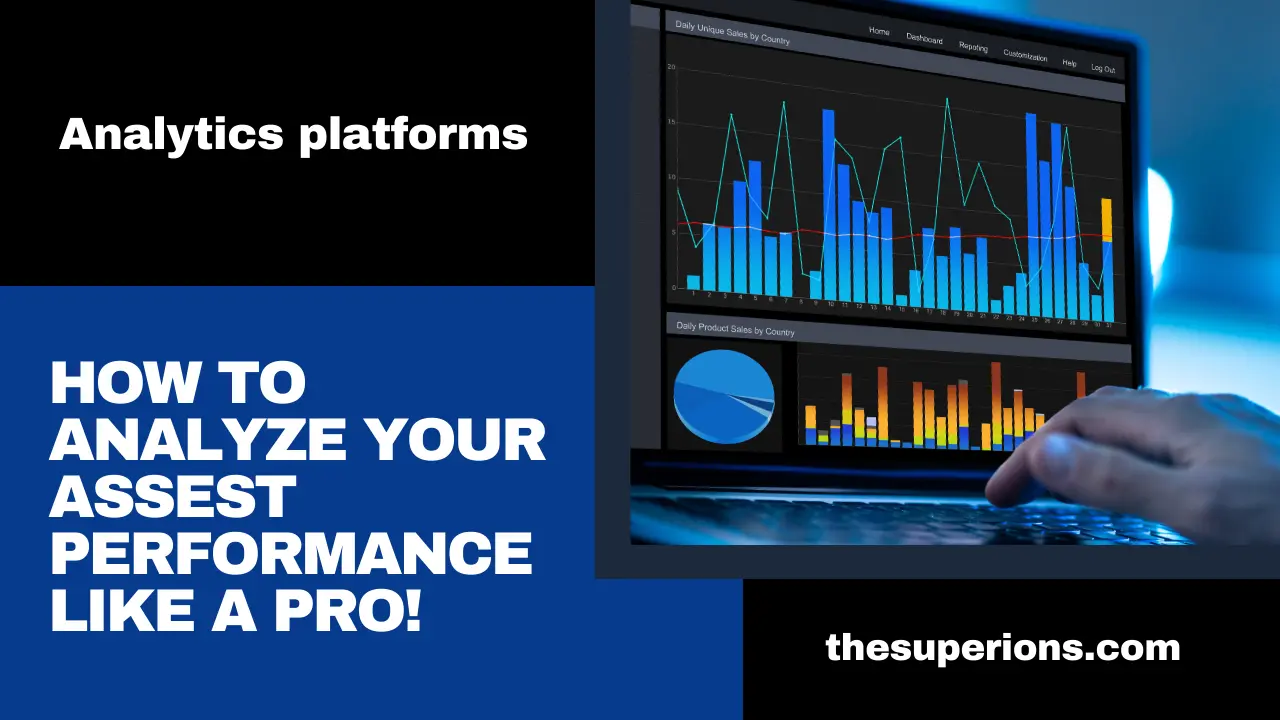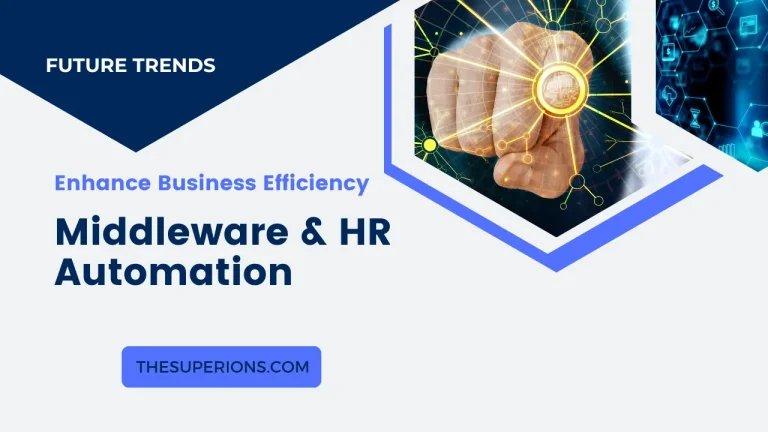Analytics platforms: Turning data into actionable insights to improve business decisions
In today’s world, data has become a valuable resource. The value of data is that it helps identify patterns of human behavior in any digital environment be it websites or apps, so that businesses can make informed decisions based on it. Such data is extracted with the help of analytics platforms. The data obtained through them becomes insights that can improve a company’s strategy and operational efficiency. For example, companies like Amazon and Netflix are using analytics to personalize offers and optimize user experience, resulting in increased customer loyalty and revenue growth (VWO).

Below, we look at how analytics platforms can improve business operations by exploring online banking and software development. But if you’re not satisfied with existing solutions, opting to hire a bespoke software agency is a strategic move. With insights from Join.To.IT, we’ve simplified complex data mining concepts to make them easier to understand. By the end of this article, you’ll understand how to use analytics platforms to gather important data about the performance of your digital platforms and user behavior.
Many people believe that implementing analytics platforms is a complex and expensive process. However, this is not the case. Next, we will show you that there are affordable and easy to learn analytics tools. They are suitable for any business, including small businesses. CIO’s experts insist: in the era of big data, analytics platforms are not just a fashion trend. They are investments that are necessary for development and success. They pay off by improving operational efficiency and strengthening market positions.
Empowering Business Strategy: the Evolution of Actionable Analytics
Introductory: What Is Actionable Analytics?
Actionable analytics begins after the formal collection and processing of data. It is a process of making sense of and interpreting the findings that enables companies to understand the past and present in a way that enables them to anticipate and influence the future. This is accomplished through four main stages: descriptive, diagnostic, predictive and prescriptive analytics.
People Also Read?
- Descriptive analytics provides a retrospective view of events and answers the question “what happened?”.
- Diagnostic analytics investigates the causes of events that occurred and answers the question “why did it happen?”.
- Predictive analytics formulates predictions for the future, answering the question “what will happen?”.
- Prescriptive analytics helps formulate recommendations that can influence the occurrence of desired events and answers the question “what can we do to prevent it from happening again?”.
Transforming data into solutions — it’s a process where science becomes art. Remember the waterfall of numbers in the movie “The Matrix”, so — with the help of data mining platforms, you will be able to “read” them. What seemed to be gray numbers will turn into valuable insights that will tell you in the language of your business what to do, how to do it and when, for example, to release a SaaS-product on the market.
Analytics Platforms Raise Business Potential
Analytics platforms significantly impact business profitability, influenced by factors such as company size, customer demographics, operational processes, and market dynamics. In today’s digital world, even small businesses manage vast amounts of data. McKinsey experts assert that these platforms are crucial for business growth at any scale. Consider Internet banking: analytics are key to improving services and profits by:
- Accelerating banking operations,
- Cutting transaction costs,
- Ensuring accurate reporting,
- Reducing fraud,
- Streamlining processes,
- Enhancing decision-making quality,
- Broadening service offerings.
Ai-Integrated Analytics for Banking
At the heart of analytics platforms is artificial intelligence deployed in cloud servers. Integrated AI can provide alternative approaches to analyzing data, simplifying the process and improving the accuracy of results. The phrase “data is the new gold” has become commonplace, but it aptly highlights the value of data in today’s world. Yet remember, getting data is not enough. You have to interpret it correctly so that the numbers become a guide to action. To avoid common mistakes in data analysis, it’s important to keep data current and accurate. Here are three examples of analytical platforms that are well-suited for Internet banking:
- Hitachi Solutions offer modern data analytics tailored for banking, which can help institutions better understand their customer base and manage risk more effectively.
- McKinsey Analytics provides smarter insight generation for big data in banking, enabling banks to leverage data to improve performance and customer service.
- Datrics.ai lists several business intelligence tools that are ideal for modern banking needs, providing insights into their strengths and benefits.
People Also Read?
Although these analytics platforms offer valuable tools for banks to enhance their operations and boost profits, they might not meet all your needs. In such instances, partnering with a bespoke software company can provide the customization you require or help you create a unique platform.
Unlocking Efficiency: Analytical Tools for Enhanced Business Performance
There are many tools available for collecting, analyzing, and visualizing data. One such tool is Google Data Studio (also known as Google Looker). This free service allows you to create interactive reports and dashboards by combining data from multiple sources. It specializes in financial analysis, workforce management, and sales funnel visualization. Google Data Studio integrates with popular services such as Google Analytics, Google Ads, YouTube Analytics, and Facebook Ads. As far as software development analytics tools are concerned, let’s focus a bit more on them:
- Jellyfish is a leading engineering management platform that provides a complete view of engineering organizations, their work, and their operations. By analyzing engineering signals from Git repositories, it helps track progress, identify bottlenecks, and optimize development processes.
- Swarmia provides visibility into three key areas: business outcomes, developer productivity, and development velocity. It is particularly useful for small businesses and offers a free entry-level version.
- Pluralsight Flow focuses on software development analytics by measuring team productivity, tracking code-writing time, and analyzing bug reports. This helps teams incrementally improve performance and make informed decisions.
- Tableau — not exclusively for software development, but great for business intelligence (BI), allowing you to visualize data and gain insights from a variety of sources.
- Qlik Sense — great for machine learning (ML) applications: it allows you to explore and analyze data, making it valuable for developers working with machine learning models.
People Also Read?
Why Data is Important for Your Organization in the Finance Industry
Conclusion
Analytics platforms turn raw data into insightful information, shedding light on business processes and patterns in customer behavior. They reveal both strengths and weaknesses in aligning these aspects. By leveraging such platforms, businesses maintain agility, enhance customer experiences, and foster innovation — key to thriving in the digital era. When generic solutions fall short, consider engaging a custom software firm. Join.To.IT stands out as a software agency that offers cost-effective services tailored to the needs of small and medium-sized enterprises.
While the business, processes, and customers are all important, the analytics data itself is the value that industry stakeholders will pay dearly for. Here are the bonuses that companies get from using analytics platforms:
- Analytics platforms allow businesses to explore new revenue opportunities, from selling the data itself to providing data assessment as a service.
- Retailers can use data to recommend personalized products or services to customers.
- By transforming data into actionable insights, companies can transform their business models to remain competitive in a rapidly changing environment.
In summary, analytics platforms not only improve efficiency, but also create new revenue streams by monetizing data and specialized services. These platforms help companies stay agile, improve customer experience, and innovate while remaining competitive in the digital age. HBR has identified 4 steps to start monetizing your company’s data.





